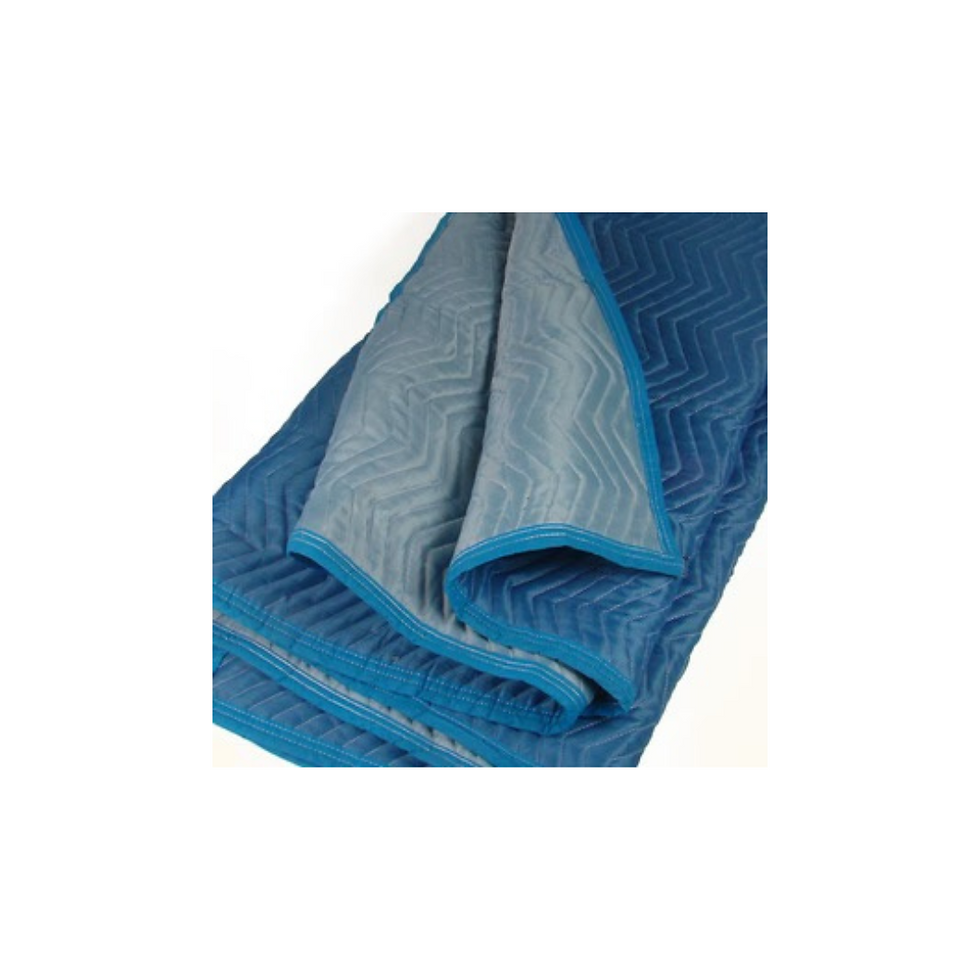Essential Tips for PODS and Storage Moves
- Danis. C
- Nov 29, 2024
- 4 min read
Updated: Dec 18, 2024
Moving can be an overwhelming process. More specifically, moving into storage or a rented POD. Moves like this can introduce new challenges that an inexperienced mover may not expect. Don’t worry! This guide will help you prepare for your big moving day by highlighting what to expect when relocating your belongings into a POD or storage unit. We’ve also provided you with a list of essential supplies you will need, plus our expert recommendations on where to purchase them.
Moving Pads: Essential for Protecting Your Furniture

When moving furniture into a POD or storage unit, keeping your items wrapped for the entire storage period is crucial. This helps prevent damage during the relocation process, as well as when your belongings are being stacked and unstacked from storage. While most moving companies provide moving pads during the relocation process, they often require their moving pads to be returned once your belongings are unpacked at your drop-off location. If a moving company happens to sell its moving pads, they typically charge higher prices than retail stores. For this reason, it’s typically more cost-effective to purchase your own moving pads elsewhere.
To ensure you purchase enough moving pads, plan on using two moving pads per piece of furniture. Always opt for standard-size pads (72 x 80 inches).
Where to Buy Moving Pads
High-Quality Moving Pads: For durable, professional-grade moving pads, visit Uline or New Haven. Keep in mind these retailers may require purchasing in bundles rather than individually.
Affordable Moving Pads: Check local U-Haul locations, Public Storage, Lowe’s, or Home Depot. These stores often sell moving pads individually, but it’s a good idea to call ahead or check online to confirm availability and pricing.
For online shoppers, Amazon is a convenient choice, though you may need to wait a few days for delivery. Always be sure to plan accordingly when purchasing online!
Budget-Friendly Alternatives: If you're on a budget, consider platforms like Facebook Marketplace, Craigslist, or Offer Up for used moving pads. As a last resort, household items like bedsheets, towels, or blankets can provide some protection. While not ideal, they’re better than leaving furniture unprotected. These options are great if you’re trying to maintain an environmentally friendly move!
Note: Investing in proper moving pads ensures your furniture is secured from damages during the moving process, saving you money in the long run.
Moving Boxes: Important for Packing and Protecting Fragile Items

Moving boxes are a key part of the moving process. Not only do they provide a place to securely pack your belongings, but they also offer added protection for your furniture. Professional movers often use cardboard as an extra layer of protection, especially for fragile or glass items. This method is beneficial for long-distance moves or items being placed in storage.
Common items wrapped using cardboard include:
- Televisions
- Glass tabletops
- Marble pieces
- China cabinets
To ensure a smooth process, have plenty of moving boxes prepared for the movers, as many companies do not provide their own boxes. As with moving pads, purchasing boxes from a moving company can be expensive. We always recommend purchasing more boxes than you think is necessary. It’s better to be overprepared than underprepared, and you can always return any unused boxes.
Examples of fragile items wrapped using cardboard:


